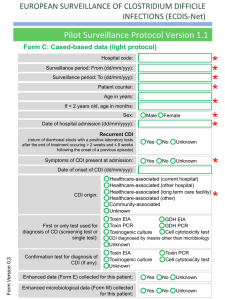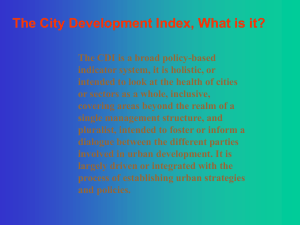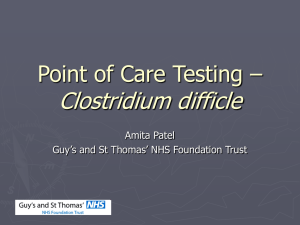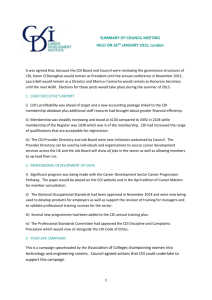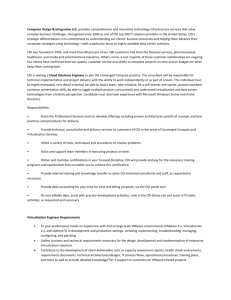file - BioMed Central
advertisement
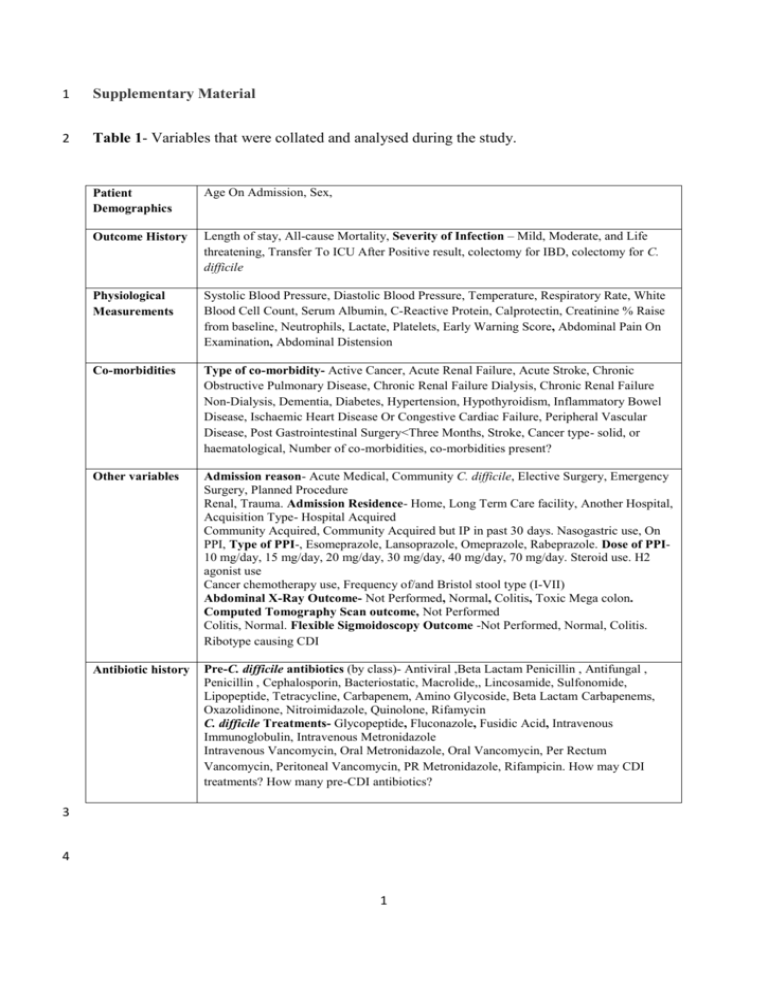
1 Supplementary Material 2 Table 1- Variables that were collated and analysed during the study. Patient Demographics Age On Admission, Sex, Outcome History Length of stay, All-cause Mortality, Severity of Infection – Mild, Moderate, and Life threatening, Transfer To ICU After Positive result, colectomy for IBD, colectomy for C. difficile Physiological Measurements Systolic Blood Pressure, Diastolic Blood Pressure, Temperature, Respiratory Rate, White Blood Cell Count, Serum Albumin, C-Reactive Protein, Calprotectin, Creatinine % Raise from baseline, Neutrophils, Lactate, Platelets, Early Warning Score, Abdominal Pain On Examination, Abdominal Distension Co-morbidities Type of co-morbidity- Active Cancer, Acute Renal Failure, Acute Stroke, Chronic Obstructive Pulmonary Disease, Chronic Renal Failure Dialysis, Chronic Renal Failure Non-Dialysis, Dementia, Diabetes, Hypertension, Hypothyroidism, Inflammatory Bowel Disease, Ischaemic Heart Disease Or Congestive Cardiac Failure, Peripheral Vascular Disease, Post Gastrointestinal Surgery<Three Months, Stroke, Cancer type- solid, or haematological, Number of co-morbidities, co-morbidities present? Other variables Admission reason- Acute Medical, Community C. difficile, Elective Surgery, Emergency Surgery, Planned Procedure Renal, Trauma. Admission Residence- Home, Long Term Care facility, Another Hospital, Acquisition Type- Hospital Acquired Community Acquired, Community Acquired but IP in past 30 days. Nasogastric use, On PPI, Type of PPI-, Esomeprazole, Lansoprazole, Omeprazole, Rabeprazole. Dose of PPI10 mg/day, 15 mg/day, 20 mg/day, 30 mg/day, 40 mg/day, 70 mg/day. Steroid use. H2 agonist use Cancer chemotherapy use, Frequency of/and Bristol stool type (I-VII) Abdominal X-Ray Outcome- Not Performed, Normal, Colitis, Toxic Mega colon. Computed Tomography Scan outcome, Not Performed Colitis, Normal. Flexible Sigmoidoscopy Outcome -Not Performed, Normal, Colitis. Ribotype causing CDI Antibiotic history Pre-C. difficile antibiotics (by class)- Antiviral ,Beta Lactam Penicillin , Antifungal , Penicillin , Cephalosporin, Bacteriostatic, Macrolide,, Lincosamide, Sulfonomide, Lipopeptide, Tetracycline, Carbapenem, Amino Glycoside, Beta Lactam Carbapenems, Oxazolidinone, Nitroimidazole, Quinolone, Rifamycin C. difficile Treatments- Glycopeptide, Fluconazole, Fusidic Acid, Intravenous Immunoglobulin, Intravenous Metronidazole Intravenous Vancomycin, Oral Metronidazole, Oral Vancomycin, Per Rectum Vancomycin, Peritoneal Vancomycin, PR Metronidazole, Rifampicin. How may CDI treatments? How many pre-CDI antibiotics? 3 4 1 5 S1. Model Criteria 6 A classification and regression tree criteria was chosen as a growing method. It uses a 7 recursive partitioning method and builds classification and regression trees for predicting 8 categorical predictor variables (classification). The model used an automatic maximum tree 9 depth from the root node of 5, a minimum number of cases in a parent node of 10 which if 10 split into further groups (child nodes), would contain a minimum number of 5 cases, to 11 ensure outcome measurements were based on a sufficient amount of data. A misclassification 12 cost of 3 was given for the prediction of death where the outcome was survival and a cost of 13 6 was given for the prediction of survival where the outcome was death, to account for the 14 sample size bias. 15 S2. Baseline Patient Demographics and Clinical Measurements 16 Site of Infection Acquisition 17 67% (164) of cases admitted acquired C. difficile in hospital, 16% (40) of cases acquired C. 18 difficile solely in the community, and 17% (41) cases acquired C. difficile in the community, 19 but had been an in-patient in the last 30 days. 57.7% (123) of patients admitted were on 20 gastric acid suppressing drugs of some sort and four patients were on cancer chemotherapy 21 agents. Clinical measurements for each outcome group can be seen in Table 1. 22 Patient Co-morbid Status 23 A total of 15 co-morbidities were found in this cohort with patients having between 1-5 co- 24 morbidities (median = 1) and 43 patients having no co-morbidities. Ischaemic heart disease 25 or congestive cardiac failure (23.7%) was the most prevalent co-morbidity, followed by 26 active cancer (14%) and diabetes (12.4%), there were only four cases of inflammatory bowel 27 disease within this cohort. 2 28 Pre and Post CDI Treatment Therapies 29 A total of 34 antibiotics types were prescribed to this patient cohort, with most patients being 30 prescribed from 1- 8 (median = 2) antibiotics during the length of stay and four patients 31 having no antibiotics prior to onset of CDI. The 34 antibiotics could be grouped into 20 32 classes and the main class of antibiotic prescribed were the penicillin’s. No antibiotic was a 33 clearly prescribed more than any other. This response is not able to distinguish which patient 34 was prescribed multiple antibiotics 35 A total of 11 CDI treatment options were indentified, with patients receiving 1-5 treatments 36 (median =1) and 10 patients receiving no treatment, either due to palliative care or other 37 reasons. Oral metronidazole (45.1%) and oral vancomycin (35.6%) accounted for most of the 38 treatment chosen but other methods included intravenous metronidazole and vancomycin, 39 fluconazole, fusidic acid and rifampicin. 40 41 42 43 44 45 46 47 48 49 3 50 Table 2 – Baseline characteristics of cohort according to the outcome group of all-cause mortality Patient survived CDI related mortality Non-CDI related mortality Mean 76.8 N 194.0 s.d 14.1 Median 80.0 Mean 82.1 N 27.0 s.d 9.6 Median 83.0 Mean 80.9 N 24.0 s.d 9.3 Median 82.0 Length of Stay in hospital (days) 39.0 194.0 28.8 31.0 37.6 27.0 35.5 29.0 36.6 24.0 27.1 24.5 Pulse (beats per min) 88.1 184.0 15.0 86.0 85.0 26.0 17.4 87.0 95.5 24.0 22.6 94.0 Systolic Blood pressure (mm/Hg) 124.5 185.0 22.3 124.0 115.2 26.0 28.6 113.0 121.0 24.0 19.9 118.0 Diastolic blood pressure (mm/Hg) 69.2 184.0 13.2 70.0 63.1 26.0 13.5 60.0 66.5 24.0 13.5 60.0 Temperature (°C) 36.8 183.0 0.6 36.8 36.6 26.0 0.6 36.6 37.0 23.0 0.8 37.0 Respiratory rate (breaths per minute) 17.1 178.0 3.7 16.0 19.3 26.0 3.7 18.5 19.7 23.0 5.4 18.0 White Blood Cell Count (x103mcL) 13.0 193.0 7.5 11.0 22.7 26.0 22.1 17.0 21.3 24.0 33.9 10.5 Percent Rise In Creatinine from Baseline 31.6 193.0 51.8 19.0 51.3 26.0 70.4 20.6 21.1 23.0 31.1 11.7 CRP Levels (mg/L) 95.2 181.0 74.2 79.0 174.0 23.0 86.0 180.0 134.3 24.0 91.9 116.0 Neutrophil Count (cells/ul) 10.7 193.0 8.6 8.0 14.4 26.0 8.4 14.0 12.7 22.0 10.2 8.5 Platelet Levels (mcL) 316.8 193.0 152.6 301.0 266.7 26.0 129.4 290.5 269.1 24.0 112.3 273.5 5.4 31.0 25.6 20.0 5.0 24.5 27.4 19.0 5.5 27.0 Age on Admission (yrs) 31.1 165.0 Serum Albumin Levels (g/L) 51 N- Number of cases in sample 52 53 54 55 4 56 S3. Statistical Analysis- Pair wise Comparison Analysis 57 Parametric tests 58 One-way ANOVA tests for differences between means of groups with respect to the outcome 59 measure all cause mortality (survived; CDI related mortality and non-CDI related mortality) 60 were used for normally distributed interval data. The mean serum albumin levels for those 61 who survived as an outcome (31.28 g/L), those whose death was related to CDI (25.60g/L) 62 and those whose death was not attributed to CDI (27.37 g/L) were significantly different at 63 P=0.00 (F=12.45; df=178). 64 Non- Parametric Tests 65 Independent samples K-median tests were used for variables which were non-normally 66 distributed with respect to the outcome measure. 67 Pair wise comparison of all groups revealed that there was a statistical difference in median 68 respiratory rate between the survival group (16 resps/min) and the group whose death was 69 related to CDI (18.5 resps/min) (p=0.005) but not the group whose death was not related to 70 CDI (18). 71 Pair wise comparison of all groups revealed that there was a statistical difference in median 72 CRP levels between the survival group (79 mg/L) and the group whose death was related to 73 CDI (180 mg/L) (p=0.0025) but not the group whose death was not related to CDI (116 74 mg/L). 75 Pair wise comparison of all groups revealed that there was a statistical difference in median 76 white cell count levels between the survival group (11 x103 mcL) and the group whose death 5 77 was related to CDI (17 x103mcL) (p=0.002) but not the group whose death was not related to 78 CDI (10.5 x103mcL). 79 S4. Multinomial Logistic Regression Parameter Analysis 80 Table 3 - Parameter estimates for the all cause mortality outcome measures CDI related mortality and non-CDI 81 related mortality verses the survival outcome All-cause Mortality 82 β Std. Error Wald df Sig. Exp(β) 95% Confidence Interval for Exp(β) Lower Upper Bound Bound -1.217 2.119 .330 1 P=0.566 Intercept .200 .068 8.791 1 P=0.003 1.222 1.070 1.395 Respiratory Rate CDI -.221 .067 10.850 1 P=0.001 0.801 0.703 0.914 Albumin related White Blood Cell .045 .020 5.016 1 P=0.025 1.046 1.006 1.088 mortality Count .009 .004 5.388 1 P=0.020 1.009 1.001 1.017 C-Reactive Protein -.967 1.941 .248 1 P=0.618 Intercept .171 .063 7.322 1 P=0.007 1.186 1.048 1.342 Respiratory Rate Non-CDI -.170 .059 8.174 1 P=0.004 0.844 0.751 0.948 Albumin related White Blood Cell .005 .030 .024 1 P=0.877 1.005 0.947 1.066 mortality Count .007 .004 3.196 1 P=0.074 1.007 0.999 1.015 C-Reactive Protein 2 2 -2Log Likelihood =166.3 (χ = 58.6, df=8, P=0.000), Nagelkerke R =40.5, Pearson Chi-square Test; P=0.996. 83 S5. Decision Tree classification 84 Table 4- Classification of survival and death groups for the test data for the outcome all-cause mortality. Observed (N) Survived CDI related mortality Non-CDI related mortality Overall Percentage Predicted Non-CDI related mortality 0 1 121 9 CDI related mortality 3 9 12 6 0 .0% 88.2% 11.2% .6% 80.7% Survived 85 86 6 Percent Correct 97.6% 47.4%
